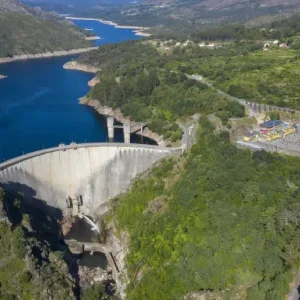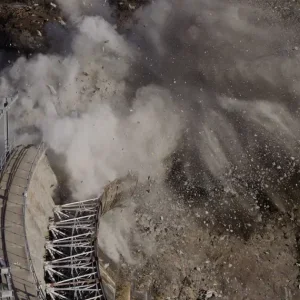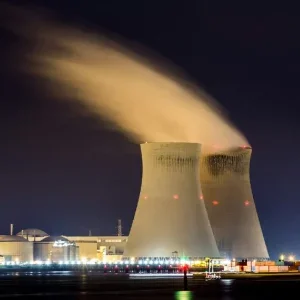Small hydro has developed considerably in the last 30 years, using mostly cross-flow and Pelton turbines. In an effort to exploit undeveloped low head sites, recent trends have seen small hydro focusing on the lower head range (2-8m). Kaplan turbines are designed for this but can be expensive and complicated, and at times are not suitable for small hydro schemes, particularly in developing countries.
Worldwide experience demonstrates that if a turbine can be designed so that the product can be manufactured locally, costs to rural communities will be reduced and less skilled local personnel will be able to operate and maintain them. Consequently communities will then have more confidence to invest in small hydro schemes.
Such communities will require a robust, low cost and low maintenance machine design that offers high performances. In particular, it should be a cavitation-free turbine so that the major hydraulic cause of machine failure and repair is eliminated. Despite various efforts, progress in this respect has been limited. For example, the simplified propeller turbine (Williams) that can be fabricated easily by using flat metal sheets only offers an efficiency of 54%. More recent efforts in New Zealand have produced a similar propeller turbine, claiming an efficiency of 73% (Giddens 1998). But such figures of efficiency are still low when compared with larger turbines.
The efficiency percentage itself is not an important issue but low efficiency indicates a severe deviation of turbine flow from the ideal status. This implies the formation of unwanted flow patterns such as large scale eddies, flow separations and reverse flows. All of these are the roots of various problems, such as hydraulic oscillation, vibration and cavitation, which make a turbine unreliable.
A sensible hydraulic design is a vital step in developing robust, low cost and low maintenance turbines. Such a task was assigned to the author by the Intermediate Technology Consultants and was funded by the UK government’s Department for International Development.
Challenging
Due to budget limitations a model test could not be developed before prototyping and this presented the designer with a real challenge. As experienced turbine designer H G Topham, a retired chief engineer from GEC-Neyrpic, says: ‘In my experience propeller turbines and pumps are difficult to design to a duty point at best efficiency straight off the drawing board, even when using advanced flow simulation programmes.’
Furthermore, the first prototype of this design was to equip a small hydro scheme at Las Juntas in Peru to replace a failed scheme using a mix-ed flow turbine recently constructed by a private firm. To avoid disappointing the local community again, a successful outcome was para-mount.
As a propeller turbine is sensitive to variations in operat-ing conditions, its energy and cavitation performances deteriorate quickly if deviating from the designed (or opti-mum) point (Li 2000). This means that the adverse factors in manufac-turing, operating and maintenance could easily make the prototype turbine deviate from its designed geometric shape, resulting in various problems such as cavitation and associated damage, vibration and noise.
So, the L-1 design had to have an energy performance as high as its counterpart large turbines but with much lower cavitation risk, in particular for off-design operations. This large reservation for cavitation-free operation could then allow the turbine to be made in a local workshop and to be operated by less skilled personnel without introducing major cavitation and other associated problems. Based on such a philosophy, the following design strategy was employed:
(1) A thorough hydraulic design creates a sound base for a really low cost and low maintenance turbine. Previous attempts to reduce the cost and avoid manufacturing difficulties, by making the blades with flat metal sheets, have introduced other fatal problems which not only outweigh the benefits gained but are very likely to cause machine failure. Therefore a high standard hydraulic design should be pursued, as if for a large turbine design, by using an advanced design approach and flow analysis.
(2) While aiming for a high energy performance, allowances for cavitation-free operation should also be created for a much wider operating zone in order to tolerate those deviations arising from manufacturing errors and off-design operations. In this sense, the design criterion should be more stringent than that for large turbines.
(3) In order to achieve such novel performances, various tactics have been applied in the design such as:
•Analysing the flow through a 3D-approach with reference to the designer’s own database.
•Equalising local cavitation numbers to achieve a better global cavitation performance without sacrificing energy performance.
•Employing a specially modified blade profile for energy conversion at high efficiency and low cavitation risk.
•Making use of boundary layer’s characteristics to suppress cavitation inception.
•Increasing the accuracy of performance prediction by referring to past cases.
•Minimising manufacturing errors by providing the manufacturer with a master blade or a set of 3D-templates for blade profiling.
•Passing the design concepts and detailed considerations onto the mechanical designer and the manufacturer to ensure good implementation of the hydraulic design.
The L-1 turbine was requested to meet the above specifications. During the design process, two turbine schemes were compared and a final choice was made in favour of factors such as advanced characteristics, less components, easy manufacturing and low costs.
The first prototype was made in a local workshop using basic machining tools. The machine was commissioned in March 2000 at Las Juntas and tested in situ.The test results show that the philosophy and strategy employed are appropriate, enabling a high performance turbine to be made locally and economically with easy operation and maintenance.
The prototype’s characteristics are accurately predicted and performing well (despite some manufacturing defects which were accounted for when predicting performance and are permissible in this case). No signs of cavitation and vibration have been spotted.
The design has already attracted several inquiries in South America, and was on show at the 6th World Renewable Energy Congress held in Brighton, UK from 2-4 July 2000.
Related ArticlesSpotlight on… South America
| Specifications |
| The Las Juntas scheme was planned as follows. Generating capacity 25kW No of generating units 1 Turbine speed 900rpm Head 7m Available flow rate 0.6m3/sec Site elevation 1100m asl Turbine installation height <0.5m |
TablesSite test results






